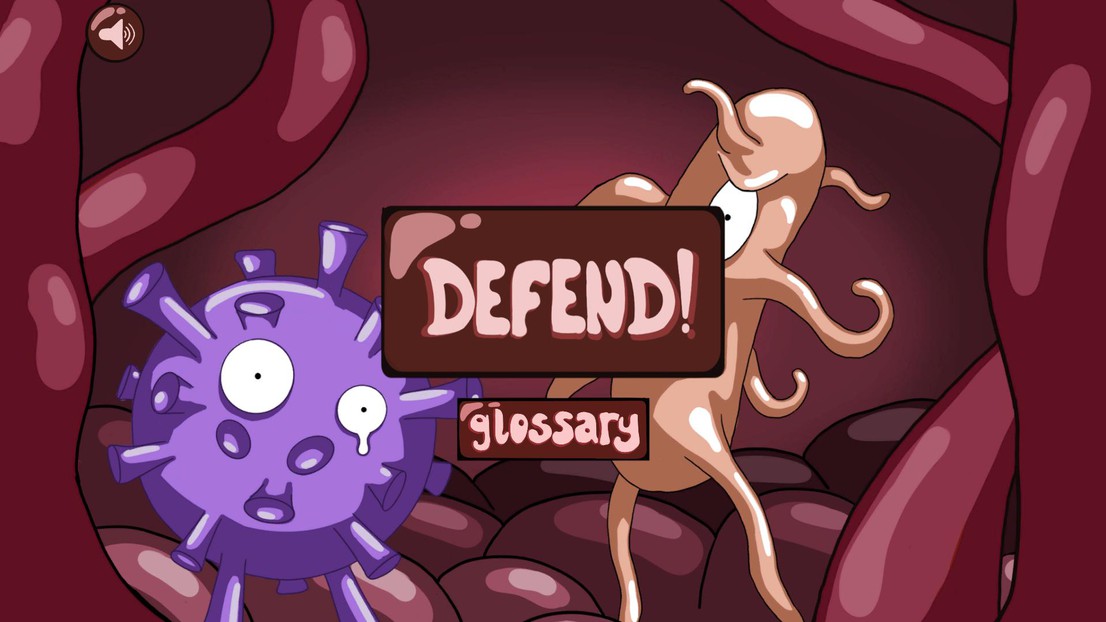When science and the humanities play together

LINOXE attack of pathogens © 2025 EPFL
The “Video Games and Gamification” course is part of the new “One Campus” program, in which students from EPFL and UNIL study together. Combining technical expertise, creativity, and pedagogy, video games are an ideal field for students in scientists and engineers to collaborate with those in the humanities and social sciences.
The course is taught by Yannick Rochat, an assistant professor in video game studies at the Faculty of Arts and Social Sciences at the University of Lausanne (UNIL). He is also co-founder (with Selim Krichane) and the current director of GameLab Lausanne. His course “Video Games and Gamification” is part of the College of Humanities’ (CDH) Social Science and Humanities (SHS) “One Campus” program because, as Rochat explains, “creating a video game requires a wide range of skills that echo many of the disciplines taught at EPFL and UNIL”.
"Some EPFL students bring programming skills to the table, but not all of them, far from it,” Rochat says. “Knowledge of physics is also generally appreciated, as is project management experience, which is often quite advanced at EPFL. However, any discipline can lead to the creation of a game based on their scientific subject.”
As for UNIL students, Rochat notes that it is not uncommon to find those with very good programming or even video game creation skills. Ultimately, Yannick Rochat does not see a division of roles between those studying engineering and those studying the humanities. “What is nice to see is the students’ openness to interdisciplinarity and, in general, their ability to communicate despite sometimes having profoundly different backgrounds.”
Games created by groups of EPFL-UNIL students
In this course, video games are approached as a subject of research based on work carried out in the humanities and social sciences in the field of game studies. Throughout the course, students acquire knowledge in video game creation and become familiar with various research projects in cultural and scientific mediation through games. Students are then asked to work in groups on a gamification project based on scientific material from their discipline where they apply fundamental concepts of video game studies to the creation of a concrete game design project, which is then presented and discussed collectively.
One group created the game “Coolor,” in which Ari explores a ruined city to bring life and color back to a polluted world using his paint gun and skillfully combining the last available sources of color. Another group created “Electro-Pong,” a game that reimagines the famous game “Pong” with a touch of electrodynamics. Finally, another team of students developed the game “Attack of Pathogens,” in which players attempt to defend a living organism against attacks from viruses, bacteria, and other aggressive microorganisms.
“This course had a real butterfly effect for me”
Yonah Bole, who now works at Effixis as an engineer in the field of large language models at Effixis, took the course during her studies at HEC UNIL.
“This course opened my eyes to the origins of video games and what a game is in the broadest sense,” she says. “It was also an opportunity to embark on my very first video game development project, and I learned a lot from it. I loved working with students from EPFL and UNIL. It's not often that you get the opportunity to participate in inter-university projects, and it was great to combine everyone's strengths and ideas to create a game prototype together. Three years later, I'm still in touch with my team, and it's a real pleasure to follow their careers after graduation. This course had a real butterfly effect for me: it led me to an internship at Ubisoft, then inspired me to pursue a more technical path at university. I am very grateful to the professors for that. I also really enjoyed being with very different people, all united by a common interest: a passion for games”.
Links to games:
COOLOR: The game created by Yonah's group: https://maximezmt.itch.io/coolor (expect a few bugs, as the game is four years old and has not been updated)
ELECTRO-PONG: https://nebulean.itch.io/electro-pong. A reinterpretation of the game PONG in an electromagnetism context.
ATTACK OF PATHOGENS: https://lynoxe.itch.io/attack-of-pathogens
One Campus EPFL-UNIL : addressing social issues through interdisciplinarity
While co-teaching is now commonplace, learning with students from other schools is rarer and, moreover, difficult to implement. However, such a practice develops each individual's ability to understand the contributions of other disciplines and to situate their own skills within a common project. The problems that future engineers will have to solve require this ability to engage in dialogue and interdisciplinary collaboration. For this reason, EPFL's SHS Program has been developing a range of courses designed to bring together and train students from UNIL and EPFL for several years.
Marc Laperrouza, educational coordinator of the SHS Program, coordinates the “One Campus” initiative. He notes that inter-university collaborative work teaches students to compromise and exposes them to complex issues that take them beyond the disciplinary fields in which they are accustomed to working. “These courses allow students to compare their different epistemological perspectives and build bridges between their disciplinary fields,” he explains.
Nine courses have been selected at UNIL: four from the Faculty of Arts, two from the Faculty of Social and Political Sciences, two from the Faculty of Business Studies, and one from the Faculty of Law. “We hope that this program will enable students to develop cross-disciplinary skills, which are highly sought after in the professional world,” Marc Laperrouza adds.
Find out more about the SHS Program's “One Campus” initiative: https://www.epfl.ch/schools/cdh/education-2/social-and-human-sciences-shs-program/courses-open-to-unil-and-epfl-students/